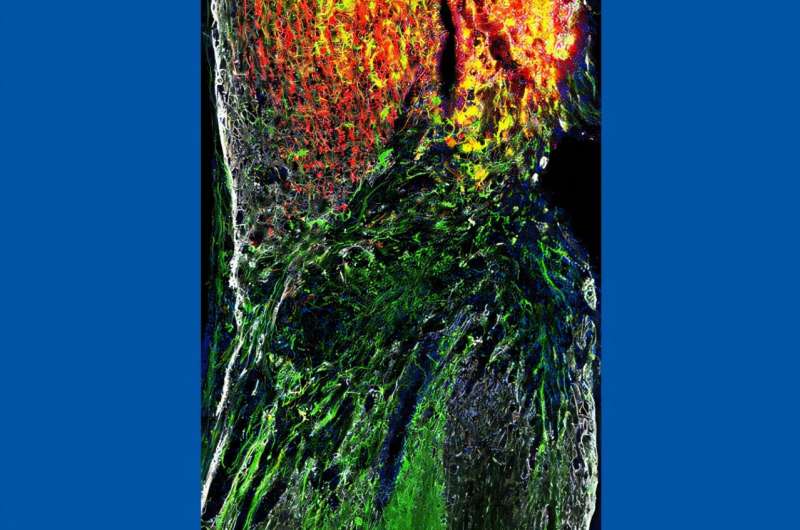Andrew Stewart, Ph.D., assistant professor at the Spinal Cord and Brain Injury Research Center (SCoBIRC) in the Department of Neuroscience in the UK College of Medicine, is investigating why treatments that could help repair and regenerate the damaged spinal cord stop working shortly after the injury has occurred. So far, scientists have a limited understanding of why these treatments fail in chronic cases.
“The initial injury is only one part of the problem. It’s the inflammation and scarring that peaks a week or two after injury, that disrupts healing,” said Stewart. “Inflammation in the spinal cord behaves a lot like inflammation in the skin—except the skin heals, while the spinal cord doesn’t. Inflammation can cause more damage over time. Unlike in the skin, these inflammatory cells don’t go away. They stick around for life, making recovery even harder.”
Stewart began this work in 2020 as a postdoctoral student in John Gensel’s UK lab. Alongside Gensel and fellow researchers Chris Bosse-Joseph, Reena Kumari, William M. Bailey, Kennedy A. Park and Victoria K. Slone, he investigated long-term inflammation in spinal cord injuries and tested whether PLX-5622 (PLX), a drug designed to target specific immune cells, could reverse it.

